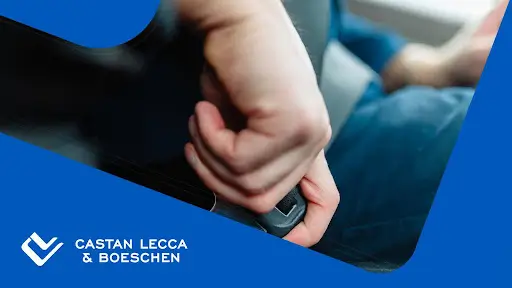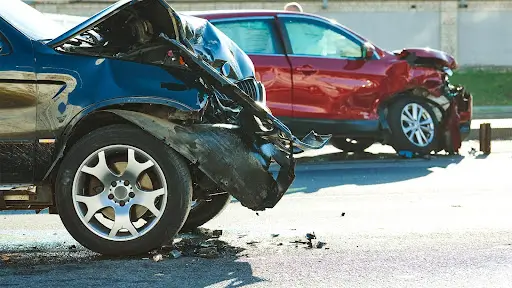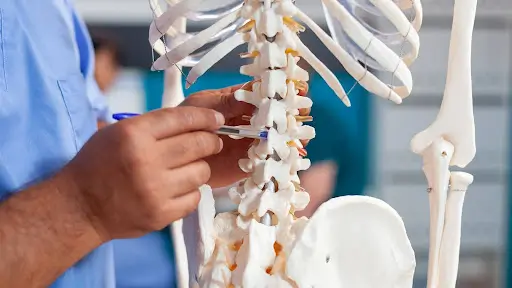The Lifesaving Shield: The Crucial Role of Seatbelts in Reducing Car Accident Injuries and Fatalities

Every time you step into a vehicle, whether for a quick errand or a long road trip, one simple action can make a world of difference in ensuring your safety: wearing a seatbelt. Seatbelts are a cornerstone of vehicle safety, with a proven track record of significantly reducing injuries and fatalities in car accidents.
As a car accident law firm at Castan Lecca & Boeschen, we understand the vital role seatbelt usage plays in minimizing the impact of accidents.
The cold, hard facts
According to the Centers for Disease Control and Prevention (CDC), more than half of all drivers and passengers who die in motor vehicle crashes each year were not wearing seatbelts at the time of the collision. That’s a staggering statistic that underscores the lifesaving potential of this simple safety measure. In fact, the CDC reports that seatbelts reduce the risk of death in car crashes by about 45% and the risk of serious injury by about 50%.
Mechanisms of protection
The mechanism by which seatbelts protect occupants is straightforward yet critical. In the event of a collision, the force generated can cause the body to move suddenly and violently. Seatbelts restrain occupants and distribute these forces over the strongest parts of the body – the hips and shoulders. This helps prevent occupants from striking the vehicle’s interior or being ejected altogether, reducing the severity of injuries.
Types of injuries prevented
Seatbelts effectively prevent a range of injuries that can occur during a car accident, including:
- Head injuries: By keeping passengers securely in their seats, seatbelts prevent the head from striking the windshield, dashboard, or other hard surfaces.
- Whiplash and neck injuries: Properly worn seatbelts help control the head and neck’s sudden forward and backward movement, reducing the risk of whiplash and other neck-related injuries.
- Ejection: One of the most severe consequences of not wearing a seatbelt is the risk of ejection from the vehicle during a crash. Ejection dramatically increases the likelihood of fatal injuries.
- Internal injuries: The force of a collision can cause passengers to collide with the vehicle’s interior or each other. Seatbelts mitigate this impact, reducing the risk of internal injuries.
- Spinal cord injuries: seatbelts prevent sudden jolts that can lead to spinal cord injuries, which can have lifelong consequences.
- Airbag effectiveness: Airbags are designed to work in conjunction with seatbelts, not as a replacement. Without a seatbelt, airbags alone may not provide adequate protection during a crash.
Real-life impact
To emphasize the real-life impact of seatbelt usage, consider the case of a recent car accident that occurred in Georgia.
In this incident, a vehicle collided head-on with another car while traveling at high speed. The occupants of the first car were wearing their seatbelts, while those in the second car were not. The results were striking: the occupants of the first car suffered minor injuries and were able to walk away from the accident, while the occupants of the second car sustained severe injuries that required hospitalization.
Beyond the basics: advancements and teen safety
Seatbelt usage is not just about buckling up – it’s about embracing technological advancements and addressing specific challenges, such as encouraging teenagers to make seatbelt usage a habit.
Advanced seatbelt technologies, like pre-tensioners and load limiters, enhance the protection provided by traditional seatbelts. They tighten the belt during a collision to keep occupants firmly in place while minimizing the risk of injury. However, fostering seatbelt habits among teenagers can be challenging.
According to the National Highway Traffic Safety Administration (NHTSA), teen drivers have a lower seatbelt usage rate than other age groups. Educational campaigns and parental influence play a crucial role in motivating young drivers to prioritize their safety.
The evidence is undeniable: wearing a seatbelt can be the difference between life and death in a car accident. The statistics, research, and real-life examples all underscore the importance of this simple yet crucial safety measure. As a law firm committed to the well-being of Georgia’s residents, Castan Lecca & Boeschen urges you to always wear your seatbelt – no matter how short the trip or your familiarity with the route.
If you or a loved one have been involved in a car accident, remember that our team at Castan Lecca & Boeschen is here to help. Our team is dedicated to protecting your rights, and you receive the compensation you deserve.
Contact us today for a free consultation, and let us guide you through the legal process while you focus on your recovery and healing.
Remember, a seatbelt is more than just a strap – it’s a lifeline that can save lives and prevent life-altering injuries. Make it a habit, not just a choice, to buckle up whenever you get in a vehicle. Your safety and the safety of your loved ones depend on it.












